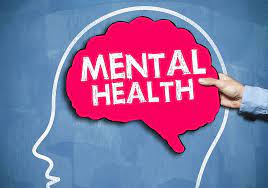What Is Stroke Screening and Why It Matters for Your Health

Strong 8k brings an ultra-HD IPTV experience to your living room and your pocket.
Every year, thousands of individuals suffer from strokes, many of which could have been prevented with early detection and lifestyle changes. Yet, stroke remains one of the leading causes of disability and death worldwide. One of the most effective ways to reduce your risk is through stroke screening. This proactive approach can identify risk factors before they lead to life-threatening events
In this blog post, we’ll explore what stroke screening is, how it works, who should consider it, and why it’s a crucial component of maintaining long-term health.
What Is Stroke Screening?
Stroke screening is a set of non-invasive diagnostic tests designed to assess your risk for stroke. These screenings evaluate the condition of your blood vessels and other critical cardiovascular markers that may indicate underlying problems, such as plaque buildup, narrowed arteries, or irregular heart rhythms.
Most stroke screenings involve:
- Carotid artery ultrasound – to check for blockages or narrowing in the neck arteries.
- Atrial fibrillation (AFib) screening – to detect irregular heartbeats that may lead to stroke.
- Peripheral artery disease (PAD) screening – to identify narrowed arteries in the limbs.
- Abdominal aortic aneurysm (AAA) screening – to assess the risk of a burst aorta.
- Blood pressure and cholesterol testing – as supporting indicators of stroke risk.
These screenings are typically quick, painless, and performed using ultrasound or other imaging technologies.
Why Stroke Screening Matters for Your Health
1. Early Detection Saves Lives
The most significant benefit of stroke screening is early detection. Many individuals have underlying risk factors like high blood pressure, atherosclerosis, or atrial fibrillation without experiencing any symptoms. Identifying these risks early allows you and your healthcare provider to take preventive measures before a stroke occurs.
2. Stroke Often Strikes Without Warning
Unlike some medical conditions that present obvious warning signs, a stroke can happen suddenly and without any prior symptoms. In fact, one in four stroke survivors has had a previous, undetected stroke. Stroke screening gives you insight into silent warning signs your body might be exhibiting.
3. It Helps You Understand Your Personal Risk
Factors like age, family history, smoking, diabetes, and high cholesterol all contribute to your stroke risk. With stroke screening, you can gain a clearer picture of how these factors are affecting your vascular health. Understanding your risk empowers you to make informed decisions about your lifestyle and medical care.
4. Prevention Is More Cost-Effective Than Treatment
The cost of treating a stroke—both financially and physically—can be enormous. Strokes often result in long-term disabilities that affect speech, mobility, and cognitive function. The economic burden can be overwhelming for both patients and families. Stroke screening is a proactive and affordable investment in your future health.
5. Improved Quality of Life
By identifying and addressing stroke risk factors early, you can take steps to protect your brain health and avoid the devastating consequences of a stroke. Lifestyle changes, medication, or minor procedures can often manage risk factors effectively. This leads to a better, longer, and more independent life.
Who Should Consider Stroke Screening?
Stroke screening is recommended for individuals who fall into certain risk categories. You should consider getting screened if you:
- Are over the age of 40
- Have a family history of stroke or heart disease
- Have high blood pressure or high cholesterol
- Smoke or have smoked in the past
- Are diabetic or pre-diabetic
- Are overweight or sedentary
- Have been diagnosed with atrial fibrillation
- Have experienced transient ischemic attacks (mini-strokes)
Even if you feel healthy, being in one or more of these categories could mean you are at elevated risk for stroke.
What Happens During a Stroke Screening?
The stroke screening process typically involves several quick and painless tests. Here's what to expect:
1. Carotid Artery Ultrasound
This test uses sound waves to create images of your carotid arteries. It helps detect any narrowing or blockages caused by plaque buildup.
2. Electrocardiogram (EKG or ECG)
An EKG measures the electrical activity of your heart and can detect atrial fibrillation or other irregular heart rhythms.
3. Ankle-Brachial Index (ABI)
This test compares the blood pressure in your ankles and arms to assess for peripheral artery disease, which increases stroke risk.
4. Blood Pressure and Cholesterol Tests
High blood pressure and elevated cholesterol levels are major contributors to stroke. These tests offer insight into your overall cardiovascular health.
5. Abdominal Aortic Aneurysm Screening
An ultrasound of the abdomen checks for any enlargement of the abdominal aorta that could rupture and cause serious complications.
The entire screening process usually takes under an hour and requires little to no preparation.
What Happens After Stroke Screening?
If your stroke screening reveals any abnormalities, your healthcare provider will recommend a personalized treatment or prevention plan. This may include:
- Lifestyle changes (diet, exercise, quitting smoking)
- Medications (blood pressure or cholesterol-lowering drugs)
- Further diagnostic tests
- Referral to a specialist for advanced care
Even if your screening results are normal, it’s a good idea to repeat the screening every few years if you have risk factors or a family history of stroke.
Common Myths About Stroke Screening
Myth #1: "I’m too young to have a stroke."
While strokes are more common in older adults, they can happen at any age. Risk factors like high blood pressure, diabetes, and smoking can affect younger people, making stroke screening relevant even in your 30s and 40s.
Myth #2: "If I don’t have symptoms, I don’t need screening."
Many stroke risk factors are "silent," meaning they don’t produce noticeable symptoms until it's too late. Stroke screening detects these hidden dangers early.
Myth #3: "Stroke screening is expensive and inconvenient."
In reality, many health facilities offer stroke screening packages at affordable rates. Some screenings may even be covered by insurance, especially if you are considered high risk.
Take Charge of Your Health with Stroke Screening
When it comes to stroke, prevention is always better than cure. By understanding your risk and acting early, you can significantly lower your chances of a life-altering event. Stroke screening is a vital, proactive step toward better brain and heart health.
Whether you have a family history of cardiovascular disease or simply want to stay ahead of potential health issues, consider scheduling a stroke screening today. It could be the decision that protects your future.
Final Thoughts
Stroke may be unpredictable, but your response to its risk factors doesn’t have to be. With simple, non-invasive stroke screening tests, you gain powerful knowledge about your health and the opportunity to take action before it’s too late. Don’t wait for symptoms—act now and invest in your long-term well-being.
Note: IndiBlogHub features both user-submitted and editorial content. We do not verify third-party contributions. Read our Disclaimer and Privacy Policyfor details.



